Deciding on the best web hosting company can be an overwhelming task. Not only is it expensive and time-consuming, but it can be confusing to know what makes one better than the other.
If you are like most website owners, you have better things to do then sign up for a different web hosting plans to see which one works best for you. Lucky for you, we have done all of the hard work for you.
Our goal on this website is to deliver open, honest, and data-driven reviews about the top 10 web hosting companies on the market.
We have signed up for a shared hosting plan with each of them, setup a simple WordPress site as a testing beacon, and been testing them out.
We are running custom health monitors around the clock 24/7 to see which hosting company has the best:
- Uptime
- Page Load Speed
- WordPress Rendering Time
In addition to these important performance metrics, we also evaluate them for their price and value proposition, quality of their tech support, and strength of their security posture.
Then we publish an in-depth review with performance charts, screenshots of receipts and support chats, and links to exclusive discounts that we have negotiated with the web hosts.
How We Rate a Web Hosting Company
Here is a detailed look at how we perform our reviews:
1. Register a domain name for each web host review
We have a domain registration account with GoDaddy. Whenever we want to start a new review we will purchase a domain name that will be used exclusively for testing their service.
The domain name we purchased for our Hostgator review, for example, looks like this:
hg-openhostingreviews.com
Here are some other examples for our reviews of Bluehost and SiteGround:
bh-openhostingreviews.com
sg-openhostingreviews.com
2. Sign up with the web hosting provider
After we get the domain name purchased and registered, then we actually sign up and pay for a shared plan with that web hosting company.
We don’t take any offers of complimentary accounts, and we didn’t notify any of the web hosting companies in advance. We wanted to go through the process just like anyone else.
Here are some examples of actual invoices and receipts:
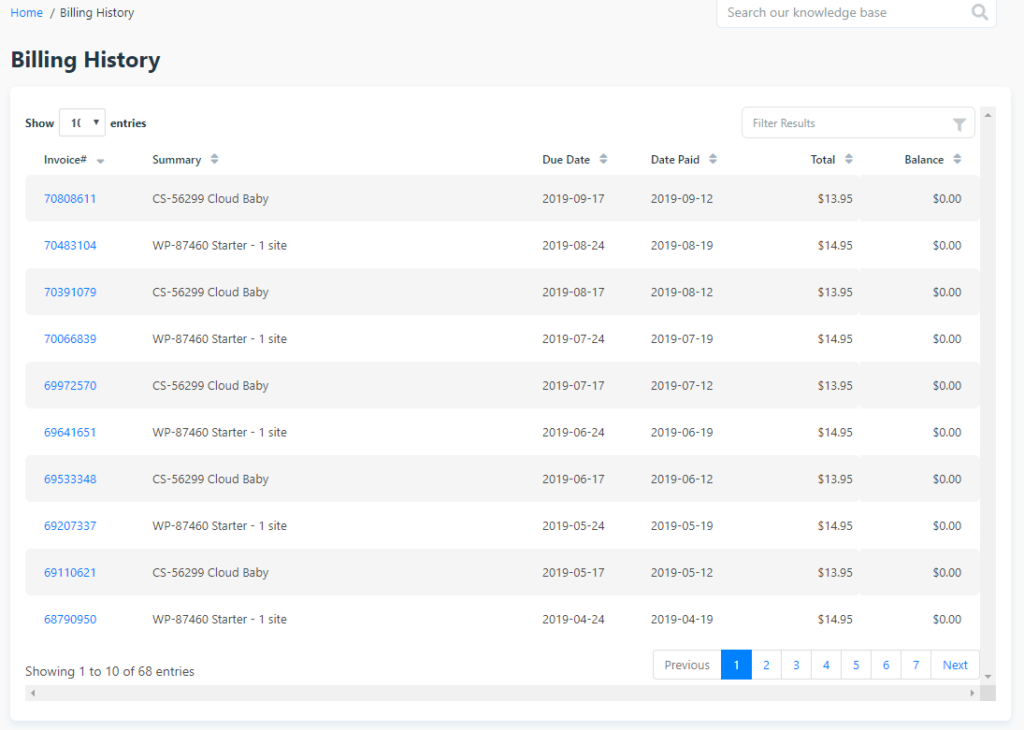
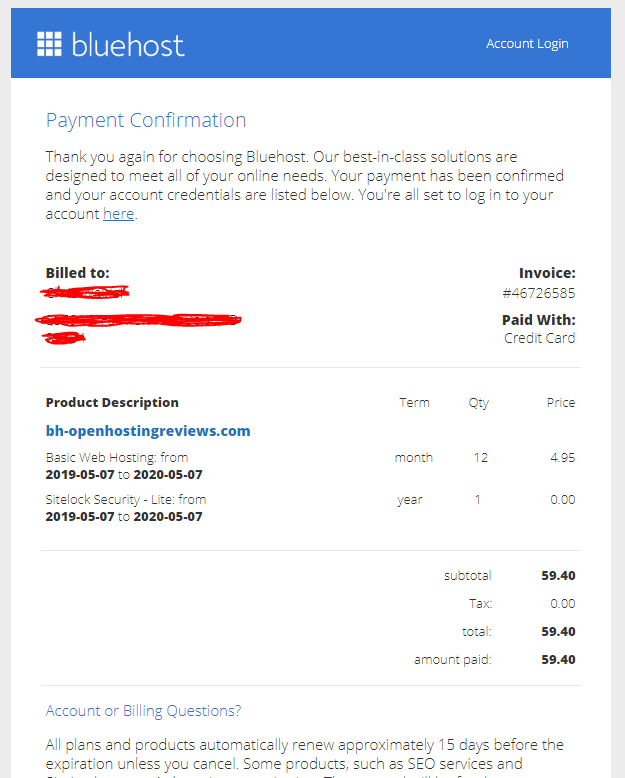
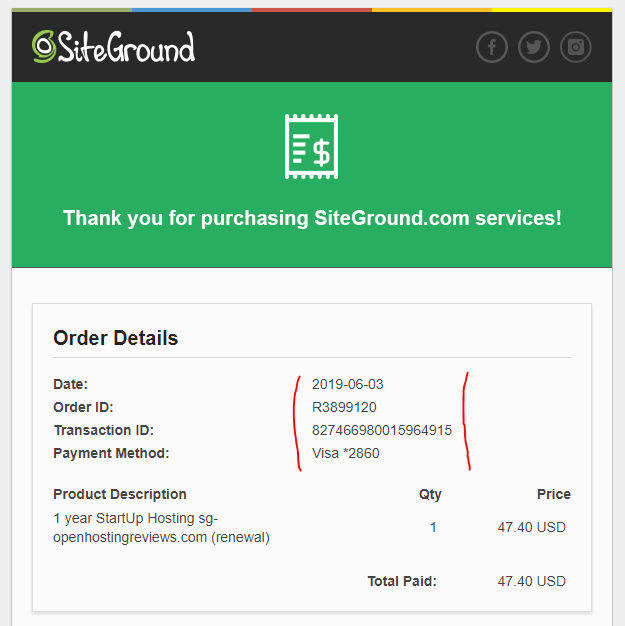
3. Point the web host name servers to our domain
When the shared hosting plan is setup and ready to go, we update the name servers on our domain name to point to the web hosting company.
Here is a simple WHOIS lookup for our Hostgator review’s domain name:
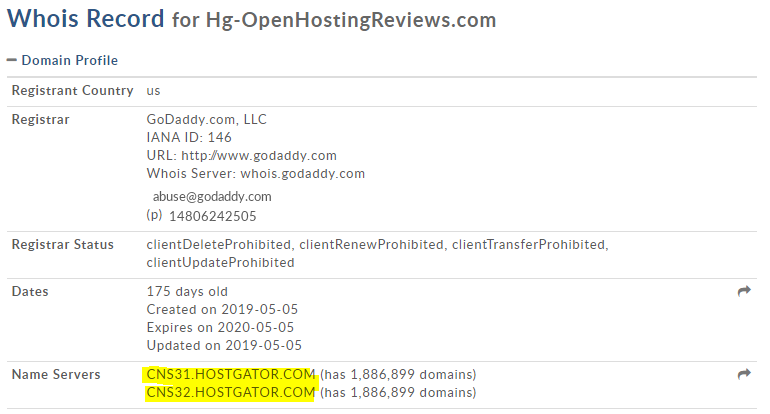
4. Setup a simple WordPress test “beacon” site
When the DNS change for the name servers has had enough time to update across the web, we log into the Control Panel for the new hosting plan and setup a new WordPress site.
We use the same content, posts, and theme (Twenty Sixteen) on each testing beacon to ensure the most accurate testing.
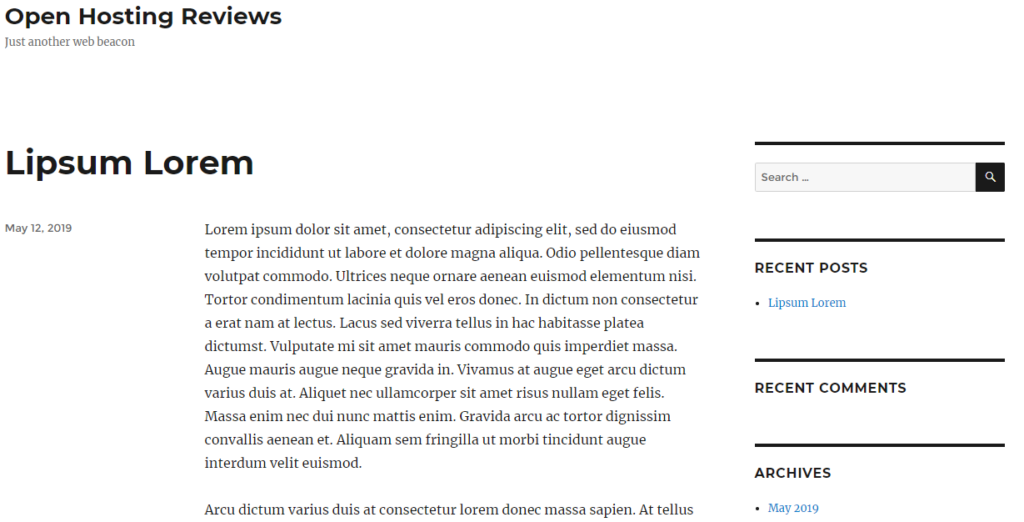
We also add a special snippet of PHP code that will show how many database queries and how many milliseconds it took for the server to render that WordPress page.

5. Collect 24/7 uptime and load time data
When the WordPress testing beacon site is all setup and functioning, we monitor the performance using special health checks on Pingdom.com.
We check the beacon website every minute to make sure that it is up and online. The check also measures how long it took to load the page.
After several months of tracking, we have a good idea of the overall health and performance of that web host. Every month we publish a rolling average of performance in a chart like this:

6. Interact with technical support
While it is good to know how the web hosting is performing on a good day, how about when something goes wrong?
A key part of any review is to know the different ways you can contact the support of a particular web hosting company, and how well they perform once you reach them.
With each of our reviews, we have started a live chat with their support and posed them a simple question.
Here is a screenshot of a live chat:
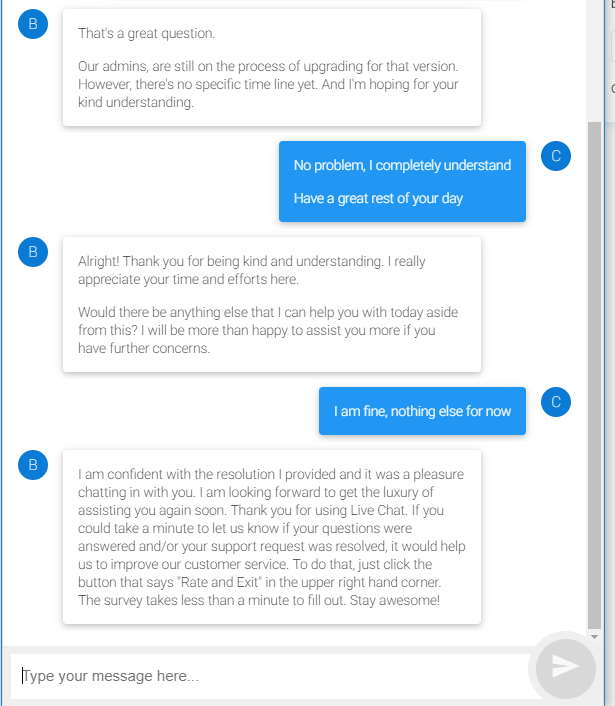
7. Evaluate available features and total cost
After we have a handle on the testing beacon WordPress site is performing, and we have gauged the quality of support, we then look at the big picture.
We way out all the features that come with the plan, their pros and cons, the total cost, and the performance and make a final decision on a recommendation.
These are the main factors we evaluate as part of our review:
- Uptime and page speed
- Free domain name included
- Free site migration included
- Backups, SSL, CDN, security add-ons included
- Storage and bandwidth quotas
- Introductory price vs. renewal rates
- Refund policies
- Accuracy of support requests
Earnings Disclosure
We are affiliates ofh some of the web hosting companies listed in our reviews. We may earn a commission if you make a purchase using a referral link.
We use these commissions to keep the lights on and fund our testing and reviewing efforts. We also use these commissions to fund efforts to educate the public on using WordPress and other web development topics.
These commissions don’t influence our reviews or recommendations of any particular web hosting company.
